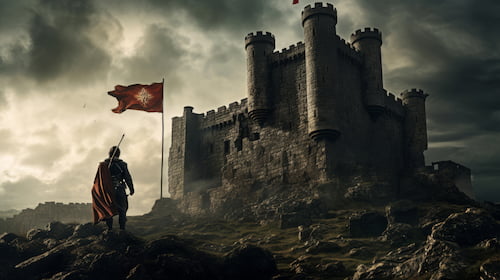Medieval Europe was a fascinating period in history that shaped the modern world in numerous ways. From the intricate politics of the era to the complex social and cultural structures, the kingdoms of medieval Europe were vibrant and diverse. One of the defining features of this time was the system of feudalism, which governed the relationships between lords and vassals. Additionally, the crusades, a series of religious wars sanctioned by the Latin Church in the medieval period, had a profound impact on Europe and the wider world. In this blog post, we will explore the politics, social hierarchy, kingdoms, and the significant influence of feudalism and the crusades during the medieval period. Join me on this journey through time as we delve into the rich history of Medieval Europe.Explore the intricate politics, social structure, kingdoms, feudalism, and the impact of the Crusades in medieval Europe. Discover the power dynamics of the time.

In medieval Europe, politics played a central role in shaping the social and cultural structure of the kingdoms that existed during that time. The political landscape was dominated by monarchs who ruled over their territories with absolute power, often relying on a system of feudalism to maintain control over their subjects.
Feudalism was a hierarchical system where land was granted to vassals in exchange for loyalty and military service. This system allowed kings to delegate authority to local lords, who in turn governed their own vassals. The political power of the monarchy was thus dispersed among a network of nobles and knights, each owing allegiance to their immediate lord.
Despite the decentralized nature of medieval politics, monarchs still held considerable power and influence. They were often seen as divinely appointed rulers, with their authority legitimized by the Church. The Crusades, a series of religious wars fought in the name of Christianity, also played a significant role in shaping the political landscape of medieval Europe.
In medieval Europe, society was structured in a hierarchical manner, with clear distinctions between different classes. The social structure was largely based on feudalism, a system in which land was exchanged for loyalty and military service. At the top of the social hierarchy were the kings and nobility, who controlled vast amounts of land and held significant power. Below them were the clergy, who played a crucial role in shaping the cultural and religious life of medieval Europe.
At the bottom of the social structure were the peasants, who made up the largest segment of the population. Peasants were tied to the land they worked and had to provide labor and tribute to their feudal lords. Despite their lowly status, peasants played a vital role in sustaining the economy of medieval Europe through their agricultural labor.
Cultural life in medieval Europe was heavily influenced by the Catholic Church, which held immense power and influence over society. Religious festivals, ceremonies, and rituals were central to the cultural life of medieval Europeans, and the Church played a significant role in shaping art, architecture, and literature during this period. Additionally, the feudal system and strict social hierarchy of medieval Europe also influenced cultural norms and customs, dictating everything from marriage contracts to codes of chivalry.
During the medieval period in Europe, kingdoms played a crucial role in shaping the political landscape of the continent. These kingdoms were ruled by monarchs who had absolute authority over their territories and subjects. The power and influence of these monarchs varied depending on the size and strength of their kingdoms.
Feudalism was a key aspect of medieval kingdoms, where kings granted land to nobles in exchange for military service and loyalty. This system helped to maintain stability and order within the kingdom, as the nobles were responsible for governing their own territories and providing protection to the king.
Religion also played a significant role in medieval kingdoms, with the church often holding considerable power and influence over political matters. The relationship between the monarch and the church was complex, with both parties seeking to assert their authority over the other. This dynamic often led to conflicts and power struggles.
Feudalism was a system in medieval Europe where land was exchanged for loyalty and service. Under this system, the king owned all the land, but he granted portions of it to lords in exchange for military support. These lords, in turn, divided their land among vassals who pledged loyalty and military service. This hierarchical structure created a complex network of obligations and relationships.
The Crusades were a series of military campaigns sanctioned by the Catholic Church in the medieval period. The primary goal of the Crusades was to reclaim Jerusalem and the Holy Land from Islamic rule. These religious wars had a significant impact on European society, economy, and culture. The Crusades also led to the establishment of new trade routes and diplomatic exchanges with the Middle East.
Feudalism and the Crusades were interconnected in many ways. The feudal system provided the manpower and resources needed to wage the Crusades. Nobles and knights were motivated by promises of land and wealth, while the Church used religious fervor to rally support for the holy wars. The Crusades, in turn, strengthened feudalism by increasing the power and influence of the nobility. Overall, these two institutions shaped the political, social, and cultural landscape of medieval Europe.